Given my long history in bodybuilding, it takes a lot to impress or surprise me. But the one time this happened was with Lesa Lewis.
I remember driving out to a desert shoot with Lesa Lewis in the passenger seat. I glanced over and was struck by the size and shape of her arm. I’m used to bodybuilding muscle, but this seemed something special. It reminded me of how I was impressed with the arm of Ronnie Coleman, also huge, full, and shapely. It seemed to me that this is how bodybuilding reacted to Sergio Oliva back in the day. When Sergio came around in the early 1960s, he displayed incredible, never-before-seen genetics that blew minds!
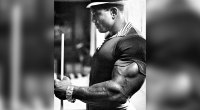
I first met Sergio in the 70s. He was standing outside of Gold’s Gym in Santa Monica, wearing a short sleeve shirt with a slit in the sleeve that allowed him to get his arm through it. His biceps were so huge and full, I thought to myself that it looked as if he had a leg coming out of his shirt sleeve rather than an arm!
Although Lesa Lewis was not nearly as big as Sergio or Ronnie Coleman, given her size and incredible shape, she could have been described as a female version of those champions. Lesa was a genetic genius as was Sergio, and when it comes to bodybuilding (and to some degree sports in general) genetics are what determine the degree and limits of achievement.

There is one significant difference between having muscle and having competition bodybuilding type muscle. Bodybuilding muscle must be full and shapely, with lots of volume. This is something that is genetically determined. You can train to make your muscles bigger, but you can’t change their shape.
Think of children’s balloons. There are long sausage-shaped balloons and round ones. You can blow each type of balloon as big as you want, but one will never change shape to be like the other one. The same is true of muscle.

Lesa Lewis was born in Kansas City. She grew up in a family with three brothers and three sisters. She ran track, played basketball, danced, and swam in high school. She attended the University of Nebraska–Lincoln for a year and participated in track as a sprinter, running the 100, 200, and 400 meters and the 400 Relay. She left college to be a freelance modeling designer of clothing, hats, and shoes.
In 1992, Lesa began weight training at Bally Total Fitness Gym. That year she was training to get fit and toned. A bodybuilder commented that she had muscular legs and told her she should try bodybuilding. After that, she decided to act on his suggestion and began training for bodybuilding.
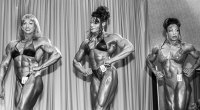
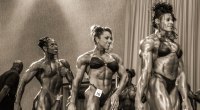
At the 1997 USA Championship, Lewis placed first in the heavyweight category and overall, and won her IFBB pro card. At Arnold’s 1998 Ms. International, Lewis placed an impressive second. In the following year, 1998 Lesa won the IFBB Jan Tana competition and qualified for the upcoming Ms. Olympia competition.
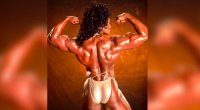
You might well ask why Lesa, with all that genetic potential, did not do better in competition than she did. The answer is simply “conditioning.” Lesa got in good shape, but not good enough for an era where women were learning to be really ripped, with impressive definition and muscularity. Lesa Lewis missed the mark and did not achieve the level of ripped muscularity required to be a serious challenger for the Ms. Olympia title. There have been a lot of women and men in competition bodybuilding who have been in the same situation. You see them in the gym and you think you are looking at the next Ms. or Mr. Olympia. But on stage, they simply lack the conditioning of their competitors.
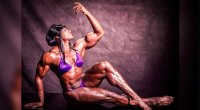
This sometimes happens again, due to genetics. Not everybody responds to diet the same way and for many hard dieting ends up costing too much muscle mass or the fat loss is uneven, resulting in pockets of fat remaining.
For example. women usually lose fat around the waist early on while fat in the hips and butt takes a long time to diet away. But I knew one female bodybuilder who lost fat below the waist early on but needed to continue dieting so hard and so long to bring in her waist that her overall muscle mass and shape were depleted.
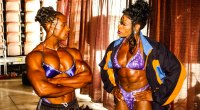
However. In many cases, the reason competitors are not in their best shape on stage is that the competition bodybuilder diet is just so difficult and has been described as needing a kind of insanity to achieve successfully. Very low calories and cardio to achieve caloric deficiency, extreme care in what you eat, pursued with discipline for some sixteen weeks – while continuing hard gym training throughout.
So along with needing the right genetics for muscle to become a champion bodybuilder, there is also the right psychological mentality to keep training with consistent intensity over a period of years and to withstand the psychological demands of an intense bodybuilding diet.
All of this helps to emphasize how difficult it is to become a bodybuilding champion and why so many try but so few succeed. Of course, the same is true of virtually any sport or demanding activity.



Comments are closed.